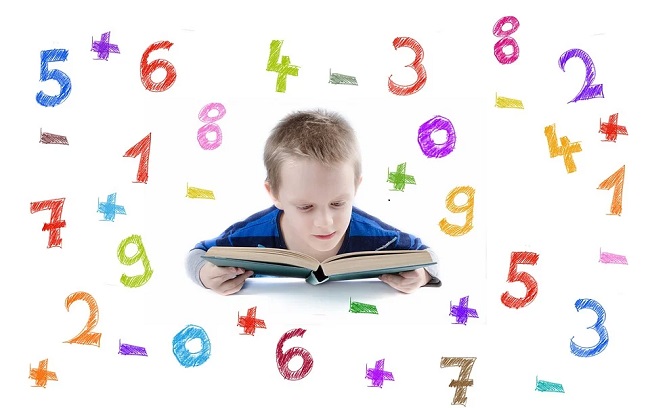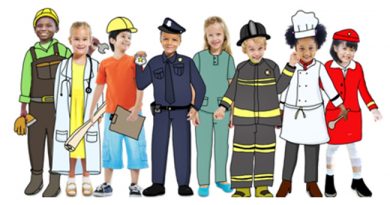How to Help Children Understand Preschool Math Concepts

Preschool math concepts can be difficult for children to grasp. This is particularly true if they are not yet fluent in the language of math or have not yet developed problem-solving skills. Fortunately, there are a number of creative ways for parents to help their children with those early math concepts.
Most parents probably think of preschool math as counting, putting objects in order and learning how to add and subtract. While these math concepts are important — and many children will learn them early on — some preschoolers may never master them. In fact, it’s more likely that children who have difficulty with these math concepts will still start school feeling frustrated or behind their peers if the issues are not addressed before they enter kindergarten.
7 Tips to Help Your Children Understand Preschool Math Concepts Easier
- Play and Learn
The best way to help children understand preschool math concepts is by playing games with them. For example, a game of I Spy can be an effective tool for helping children learn counting, geometry and even the alphabet. When possible, try and select games that have both educational and fun components such as counting bears or magnetic building blocks.
Here are a few math games that you can try with your children:
Candy Counting – The goal of this game is to count the number of candies in a jar and match it to other jars with the same amount.
Number Line – The number line is an interactive, visual representation toddlers and children can use to learn their numbers — perfect for reinforcing math skills!
One/One Hundred/ One Thousand – This repetitive interactive game will help your little one with counting, comparing numbers, and addition within three digits.
Shape and Number Match – Learn the difference between shapes and numbers by matching them together! Smile and feel happy with your child when he or she is able to match the shape correctly.
Colors – Use this eye-hand coordination game to teach your little one colors and how to tell time.
Rates of Change – Take a ride on the train through colors, as the changes in colors correspond to different numbers on your number line.
Addition & Subtraction – Use the toy oven and playdough to show how adding or subtracting ingredients changes how much is left. When using playdough, you show your child that when you take some out it makes a bigger amount.
Money – Practice counting bills and coins with this interactive game that uses money for colors, shapes, numbers, and letters.
Shape Sorting – This game can be done in two ways; with shapes on a board or buttons on a computer screen. When using a board, you put shapes in order from smallest to largest. When using buttons on a computer screen, children can drag and drop shapes in order from biggest to smallest.
Spatial Sense – This game will help your child learn how to recognize shapes and colors quickly by making them go back and forth between the two halves of the screen.
- Help Children Connect Math to Everyday Life
Some math concepts such as money and time are difficult for young children to understand. An effective way for parents to help children learn math in the classroom is by connecting it to what they already know outside of school. For example, when a child is introduced to money, always have them spend it right away, so that they can use the concept of money in real world situations.
- Avoid “Math-Talk”
One thing that is often difficult for preschool children to understand is the language of math, which can be confusing and even scary. If your child tells you that they do not understand a particular math concept, do not immediately jump in and explain the concept. Instead, try and approach the subject from another perspective by asking them if they can imagine themselves playing “bean bag” or “doughnut” with money.
- Remember Your Child’s Learning Style
Forcing children to learn math concepts that they do not yet understand can be counterproductive. In order to help children understand preschool math concepts, parents should make sure their children are always comfortable and happy during the learning process.
To pace up the learning process of kids, times tables are the best way to start with. Let your kids memorize the multiplication tables if you want them to learn basic math concepts.
- Be a Math Role Model
While it is important to be patient and understanding when helping children with preschool math concepts, parents should also be aware of their own frustration levels. Children learn best from adults who are calm and in control of themselves whenever possible.
- Start Early with Math
Children who have difficulty understanding preschool math concepts are often bright and eager learners. For this reason, they may be able to grasp certain math concepts as early as their first birthday or even before. For example, a child can learn to count by listening to the number of steps they take going up and down the stairs.
- Get the Right Help
If you are concerned about your child’s progress during the learning process, do not hesitate to seek outside help. An experienced pediatrician and/or a pedagogical specialist can help parents determine if their child is struggling with preschool math concepts for a reason. In addition, they can make suggestions on how to improve the child’s performance as quickly as possible.
What Math Concepts Should My Children Learn in Preschool?
The preschool math concepts that children should understand at this age include:
Counting:
Counting is an essential preschool math concept, which is why children begin learning it very early on. Counting is the first step in developing math skills because it involves recognizing the quantity of a given set of objects. At this young age, kids won’t be able to count beyond ten or so numbers, but their recognition of numbers will steadily increase with time as they learn more words to describe them.
Geometry:
Geometry concepts form the mathematical foundation for children and can be understood as spatial awareness. We use geometry in our everyday lives, which is why it must be taught to preschoolers as early as possible.
One of the most basic geometry concepts for young children is shapes. Although formal identification of shapes are best taught during elementary school, preschoolers should begin to learn about the basic shape categories such as squares, triangles, trapezoids, and circles. These are the building blocks of more complicated objects and space in general.
Measurement:
The most essential preschool mathematics concept for young children is measurement. As mentioned above, they must learn to compare different sizes of objects and determine the distance between all of them. They should also know the “magic words” such as “two inches long”, which can be used in future measurement situations.
Repetition and Division:
The final preschool math concepts that children should learn at this age are repetition and division. Repetition involves counting by equal intervals and dividing items into equal parts. Division involves splitting up things into equal parts.
Finally, children must also learn to recognize numbers as whole numbers, integers, or fractions. They should be able to count in all three ways — verbally, using fingers and toes, and by comparing their examples with others.
There is no doubt that learning math concepts from a young age will prepare children for a variety of future careers. Preschool professionals should expect the same in return—a child’s interest in mathematics can be shown to predict their academic performance and ability in all subjects. So if teachers want their students to have a head start at their future career prospects, they should foster these basic math concepts early on.




